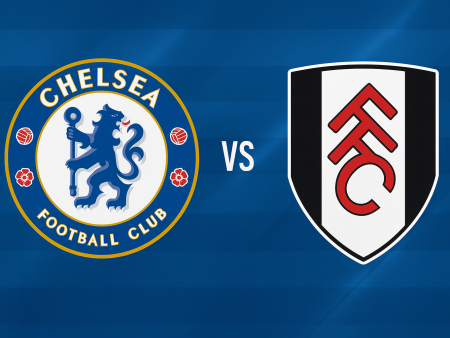Unai Emery at Aston Villa: Tactical Transformation and Early Success
Unai Emery, renowned for his achievements in European competitions and top-flight leagues, has often flown under the radar compared to other elite managers. However, since taking the reins at Aston Villa, Emery has swiftly re-established his reputation as a tactical mastermind. Inheriting a team languishing near the bottom of the Premier League, he has orchestrated an impressive turnaround, driving Villa towards safety and into the top half of the table. This analysis explores the key tactical principles behind Emery’s early impact at Villa Park, focusing on his preferred 4-4-2 system, defensive rigidity, and attacking blueprint.
Aston Villa’s Shift to a Dynamic 4-4-2 Formation
When Emery arrived, Villa had struggled to find consistent form and structure, often experimenting with various setups. Emery quickly installed a robust 4-4-2 as the team’s tactical foundation. This formation relies on flexibility, allowing central midfielders to operate from both central and wide positions, with fullbacks encouraged to provide width and support in attack.
Unlike previous setups that often featured a midfield three-with players like John McGinn drifting off the flanks-Emery’s Villa employs a flatter midfield, providing balance between defensive solidity and transitional threat. In attack, Ollie Watkins thrives as a channel runner, leading quick counter-attacks and exploiting spaces behind opposition lines.
One notable achievement under Emery has been the revitalization of key defensive personnel. Players such as Tyrone Mings, Ezri Konsa, and Emi Martinez have regained confidence and composure, forming the backbone of the team’s defense. Emery’s trust in experienced figures, including Ashley Young and Lucas Digne, has reinforced Villa’s defensive organization, with the side conceding only seven goals in seven league games after his arrival-a testament to their newfound resilience.
Midfield Balance and Creative Adaptability
Emery’s tactical flexibility extends into midfield, often mirroring the blend he used successfully at Villarreal. He typically deploys a double pivot of Douglas Luiz and Boubacar Kamara at the heart of the lineup, offering consistent protection for the back four while enabling rapid transitions.
- Douglas Luiz frequently operates as the box-to-box engine, shuttling between halves and aiding both attack and defense.
- Boubacar Kamara remains closer to the defensive line, anchoring the team and breaking up play.
- Players like John McGinn and Emi Buendia are granted more positional freedom, drifting inside or to either flank as required to overload central and half-spaces.
This setup provides both defensive security and creative impetus. Leon Bailey and Jacob Ramsey further add to the team’s flexibility, with Bailey often partnering Watkins up top and Ramsey injecting dynamism from the bench or in advanced midfield roles following the departure of Danny Ings.
Defensive Solidity: Compactness and Pressing Structure
A defining feature of Emery’s teams is their disciplined defensive organization. Aston Villa’s 4-4-2 emphasizes compactness, particularly in the central areas, making it difficult for opponents to progress through the midfield. Key principles of their defensive setup include:
- Holding a mid-block, inviting opposition to play into congested areas.
- Forcing play to wide areas, where the entire unit shifts laterally to limit forward penetration.
- Requiring fullbacks to get touch-tight to drifting strikers, freeing up center-backs for aerial battles and duels.
- Relying on the midfield duo of Luiz and Kamara to maintain close proximity to the defense, narrowing passing lanes and providing immediate coverage in transitions.
Individual roles are also clearly defined. Kamara acts as the primary anchor, while Luiz provides energy by pressing and recovering in half-spaces. Attacking midfielders such as Buendia and Ramsey are expected to help defensively, stepping back to guard wide areas or tucking in to maintain numerical superiority.
A potential vulnerability arises when creative players invert and leave their flanks exposed-most notably when Buendia drifts inside from the left-but Emery compensates by instructing central midfielders to support fullbacks in these moments, maintaining defensive numbers and covering any gaps.
Structured Attacking Play and Vertical Threat
While Emery’s reputation is often built on the defensive phase, his approach to attacking play at Villa is equally methodical. Building out from the back, Villa employs a mix of short combinations and direct balls to exploit space quickly.
- In buildup, Villa typically form a 2+3 or 2+4 structure, with Luiz and Kamara alternating in front of the center-backs to create passing triangles with the goalkeeper.
- Emi Martinez, comfortable with the ball at his feet, initiates attacks either through defenders or by spotting early runs from forwards.
- Defenders like Mings and Digne are capable of delivering precise long passes, seeking to release Watkins into space.
- In possession, Villa often transition into a 3-2-3-2 shape in the attacking third; one fullback (usually Digne or new signing Moreno) pushes forward while the other (Ashley Young) retains a conservative supporting role.
Emery identifies the risk of being outnumbered centrally when playing 4-4-2 against sides with packed midfields. To offset this, Villa’s attacking midfielders and supporting strikers are expected to drop deep and help carry the ball through lines, rather than solely relying on intricate passing sequences.
Wing play is also important. Players like Buendia and McGinn are encouraged to drift inside, creating overloads and opening channels for overlapping fullbacks. Douglas Luiz can surge forward when opportunities arise, always supported by Kamara, who remains the midfield anchor and ensures defensive cover in transitions.
In the final third, the partnership of Watkins and Bailey offers diverse attacking qualities. Bailey favours dropping deep and progressing with the ball, while Watkins pressures the defensive line and seeks to create or convert clear chances. The recent addition of Jhon Durán provides further flexibility up front, potentially serving as another forward option with proven goal-scoring ability.
Results and Impact: Emery’s Early Achievements at Villa Park
Since Emery’s appointment, Aston Villa have rapidly improved their league standing, recording multiple wins and dramatically tightening up at the back. The structured 4-4-2 system-anchored by a reliable double pivot and a reinvigorated defense-has brought both stability and opportunity for further progress.
Key successes under Emery include:
- A significant reduction in goals conceded, highlighting improved defensive cohesion.
- Rapid adaptation by the squad, with existing and new players performing confidently in clearly assigned roles.
- The ability to challenge stronger teams and target Europa League qualification in coming seasons.
As Villa look ahead, Emery’s proven tactical approach and player management skills provide a strong foundation for sustained success. With ongoing evolution in both attack and defense, fans have reason to be optimistic about the future under his stewardship.
Summary
Unai Emery’s arrival at Aston Villa has ushered in a new era defined by tactical clarity, defensive resilience, and incremental improvements in attack. Through his 4-4-2 system and careful squad management, Emery has quickly transformed Villa into a competitive and organized Premier League side. As the campaign progresses, Villa supporters can expect further developments and the potential for the club to reach new heights both domestically and in Europe.













